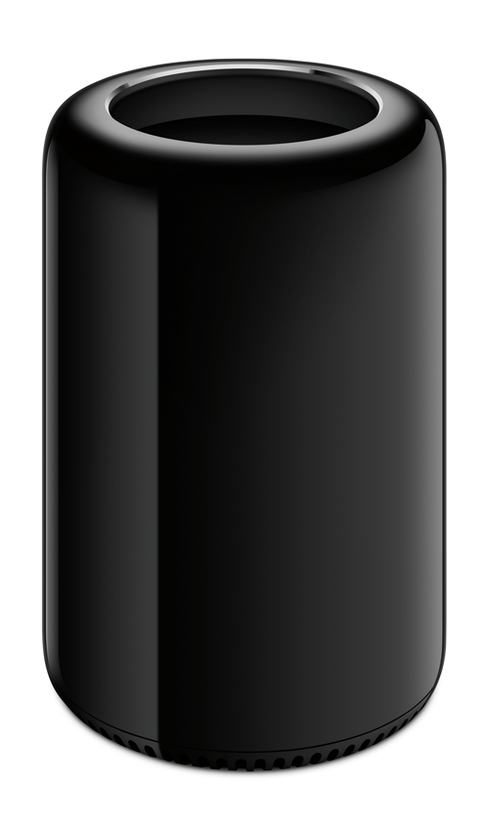Windows vs. Mac: Desktop Battle Lines Drawn
Reports and executives' hints frame potential Mac vs. PC debates of the future.


Apple Mac Pro: 9 Ways It Wows
Apple Mac Pro: 9 Ways It Wows (Click image for larger view.)
Paul Thurrott said Jan. 21, in ostensible affirmation of the screenshots, that his sources claim Update 1 will make the Modern UI easier to use on PCs. He said Modern apps viewed from the desktop will include a "close box," like the one in legacy applications, that can be clicked to completely close the app.
ZDNet's Mary Jo Foley subsequently reported that Update 1's target release date is March 11, just weeks ahead of Microsoft's BUILD conference in San Francisco. Foley's sources indicated Update 1, previously rumored to include code to further unify Windows platforms, would reduce Windows 8.1's memory and disk-space requirements. She said this would enable the OS to run on cheaper and smaller tablets.
WZor was back Friday with more screenshots, these depicting mouse-friendly functions on the touch-oriented Live Tile Start screen. Currently, to modify a Tile a user must usually select the Tile and then navigate to controls at the bottom of the screen. Based on the new images, an updated Windows 8.1 could allow mouse-oriented users to skip this step: Instead of activating a Live Tile and moving the mouse to the bottom of the screen, a user could right-click the Tile to immediately access controls. The screenshots also show new Power and Search controls in the top-right of the screen.

A screenshot from an alleged Windows 8.1 update shows a more mouse-friendly Start screen. (Source: WZor.Net)
What does this mean for users?
As Schiller opined, users want to translate data and services across devices -- and both Microsoft and Apple seem to understand this. Apple syncs iTunes and iCloud accounts throughout its device ecosystem and is now expanding iLife through the cloud. Microsoft offers a range of device-spanning services such as SkyDrive and Office 365.
Assuming Microsoft's next CEO doesn't shift course, rumors indicate the company still believes in convergence, even on desktops, but to a much less authoritarian extent. The company knows not only that users want to use the same services on both their PCs and tablets, but also that many users want to interact with their computers one way, and their tablets another.
That said, Microsoft hasn't given up on convergence -- and perhaps it shouldn't, as it's clearly a demonstrated -- if niche -- market. Hybrid devices can be useful in certain scenarios -- but they're not ready to be the cornerstone of an OS strategy.
Apple, meanwhile, has a history of releasing products that defy its leaders' statements. Steve Jobs famously blasted small tablets, but the iPad Mini has since become one the Apple's most important products. It won't be surprising if, as supply chain rumors continually claim, Apple eventually releases a larger iPad Pro to complement the recently rebranded iPad Air. If Samsung's 12.2-inch models, announced this month at CES, gain any traction, Apple might even be forced to do so.
If such a device were to appear, rest assured: A lot of people would want to use it with keyboards at least some of the time. So while I believe Apple is more ardent than Microsoft about PC-tablet separation, I won't be surprised if Apple releases a productivity-oriented iPad. Tablets and computers still demand different interaction models, but convergence has benefits. Some measure of hybridity will make sense for Apple, just as it will for Microsoft. The hazier questions are how much and how soon.
While Apple is only dropping hints about future products and Microsoft is staying completely mum, Microsoft recently released a series of guides for Windows 8.1 business users. Those tips can help people waiting for Windows 9's alleged updates get the most out of Windows now.
Michael Endler joined InformationWeek as an associate editor in 2012. He graduated from Stanford in 2005 and previously worked in talent representation, as a freelance copywriter and photojournalist, and as a teacher.
Incidents of mobile malware are way up, researchers say, and 78% of respondents worry about lost or stolen devices. But though many teams are taking mobile security more seriously, 42% still skip scanning completely, and just 39% have MDM systems in place. Find out more in the State Of Mobile Security report (free registration required).
About the Author
You May Also Like






